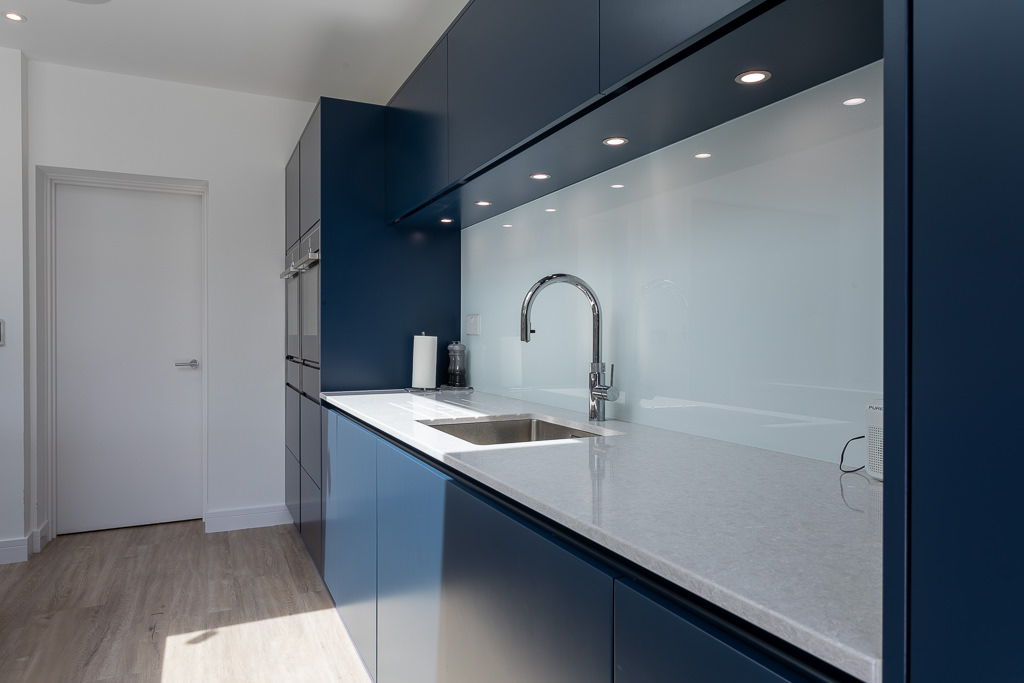12 Tips for a Practical Kitchen
The heart of the house, the kitchen, is the most common area of the home that I am asked to design.
My top twelve tips for a highly practical kitchen area are:
- Spend time getting the design right. Modern living demands a lot of the kitchen. It has to be an ergonomic workplace for the cook, inviting space for guests, a social co-ordination hub for busy families, even a makeshift home office! If you can address all of these practical lifestyle needs and still make it aesthetically beautiful, you will get a kitchen with longevity. It’s worth getting the design right for now and the future needs to get a good return on investment. Seek the advice of an interior design specialist.
- Plan a central island/area. It will provide space for different storage solutions as all four sides can be accessed. The island also provides extra worktop space and can also house the oven, hob or sink. West London Kitchens’ design also doubles as a breakfast bar making this island good for storage and cooking but also as a social hub.
- Use glass as a splashback. You could have a single sheet installed with LED lighting behind it to create a lovely general ambient light in the room. You can also have the glass tinted any paint shade, or try black and white family photos behind it for a personalised piece of art.
- Explore new technologies and colours in work surfaces. Improvements in technology are adding hard-wearing, easy-cleaning and hygienic qualities to worktops. There are many more options than just laminate or granite. Dupont’s Corian allows for endless design opportunities as you can create undulating, virtually seamless, organic shapes in a multitude of bold colour effects. It is highly durable and non-porous so no staining. Durat is a unique ecological, solid material made from recycled, post-industrial plastics and is 100% recyclable itself. Durat comes in over 70 colours, with an interesting finish giving an impression of depth. Like Corian, it can also be molded into sinks. For cost-effective worktops the ever-interesting Formica shouldn’t be ignored. Glass also makes an excellent worktop, can be edge-lit for an interesting effect, and can come in a multitude of colours. Pyrolave work surfaces made with a volcanic coloured, hard glaze have an incredibly high gloss finish. Found in the most fashionable hotel bars across the world, they can also be produced for your home kitchen. Whether it’s a simple straight line or a complicated curve, Pyrolave can make a stunning work surface in just about any colour.
- Buy the best basics you can afford. Kitchen gadgets come and go, but the essentials such as the sink, tap, extractor, oven, and fridge have to work hard over the years. Buy the best that your budget will stretch too. You will get your money back on them.
- Storage, storage, storage. There are so many kitchen storage ideas on the market. Many kitchen companies recommend carousels in corner cupboards. I’m personally of the opinion that they’re a dated solution and a waste of space. I would suggest having half shelves instead. Given that space is always at a premium, if you want to maximize storage, bespoke cabinetry is often the key. Dual Designs kitchens are specialists in kitchen pantries, larders, and clever storage devices. Hafele produces some very helpful and practical kitchen storage solutions too. Last and definitely not least, don’t forget an easily accessible herb and spice rack.
- Rubbish bins are not just throw-away. Don’t leave the bin as an after-thought, plan exactly where it will go. It needs to be near the sink, not far from the dishwasher and easily accessible from where you will do your food preparation, which tends to be where the under unit lights are positioned.
- Always fit drawer inserts for utensils. When you’re in the middle of cooking, you don’t want to be rummaging around for the right utensil. Separation makes finding the right spatula easier. Again, try Hafele.
- Install more sockets than you think you will need. You will install the electrics long before the kitchen goes in, so it’s important to plan how you will use your kitchen and appliances. Remember to place sockets where you will need them and try pop up sockets on the worktop for small appliances that don’t need to be plugged in all the time.
- Layer your lighting. The layering of lighting is as essential in the kitchen/dining room as it is in the living room. Plan high-level lighting such as overhead halogens and pendant lights over the dining table. Mid-level lighting should include lights under your kitchen units, behind the splash-back for interest and potentially on a sideboard in the dining area. Low-level lighting could be under shelves or in the kickboards. Layering your lighting will provide the adaptability of the space and address the different social occasions and workplace requirements of your kitchen.
- Add a splash of colour. You may not want to colour your kitchen units, preferring the white gloss look, but you can still add colour to your kitchen. Appliances are now available in a multitude of colours, designs, and materials that can look stunning against a white backdrop. When selecting smaller appliances such as kettles and toasters, choose colours and finishes to match your bread bin, tea towels, and the overall theme of your décor.
- Kitchen flooring should be hard-wearing. There are so many fabulous finishes on the market, it can be difficult to make a decision. But remember kitchen floors need to be hard-wearing, low maintenance and water-resistant. Consider ceramic wood-effect tiles instead of wood, like those from Caesar. Real wood can scratch, doesn’t like water, and will stain if oil, fat, or red wine is dropped on it. You should also consider other practical kitchen flooring options such as concrete tiles, rubber floor tiles, vinyl floors (like those from ), ceramic, and of course stone.
Click here to return to all articles or click left or right headings below to scroll through articles.



